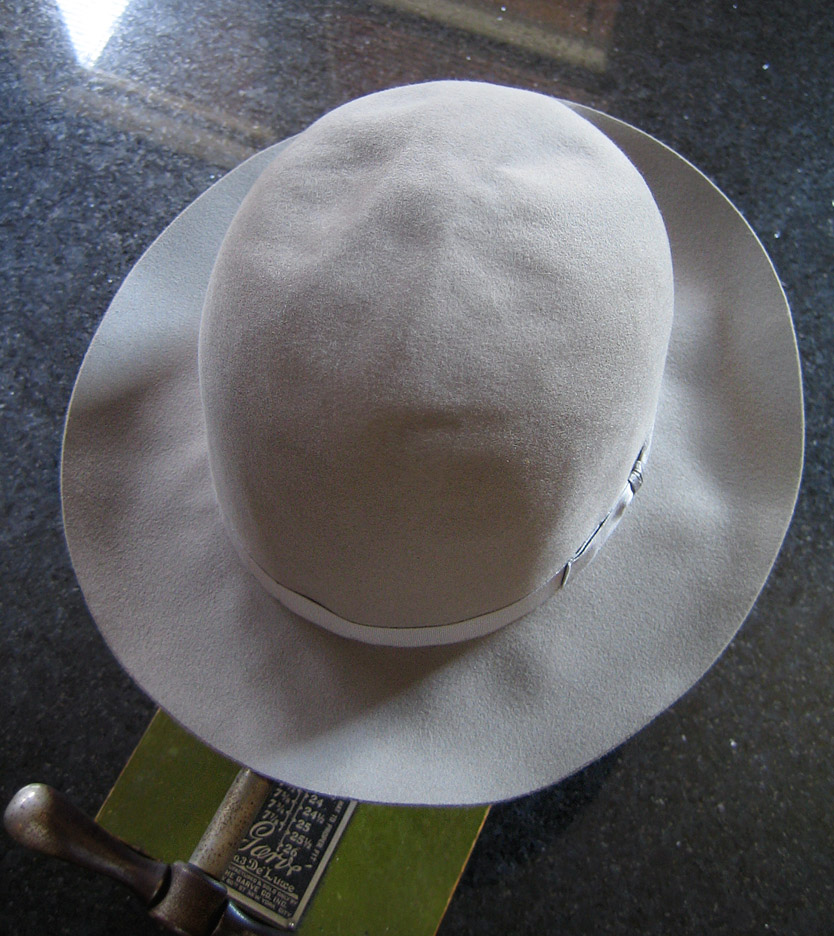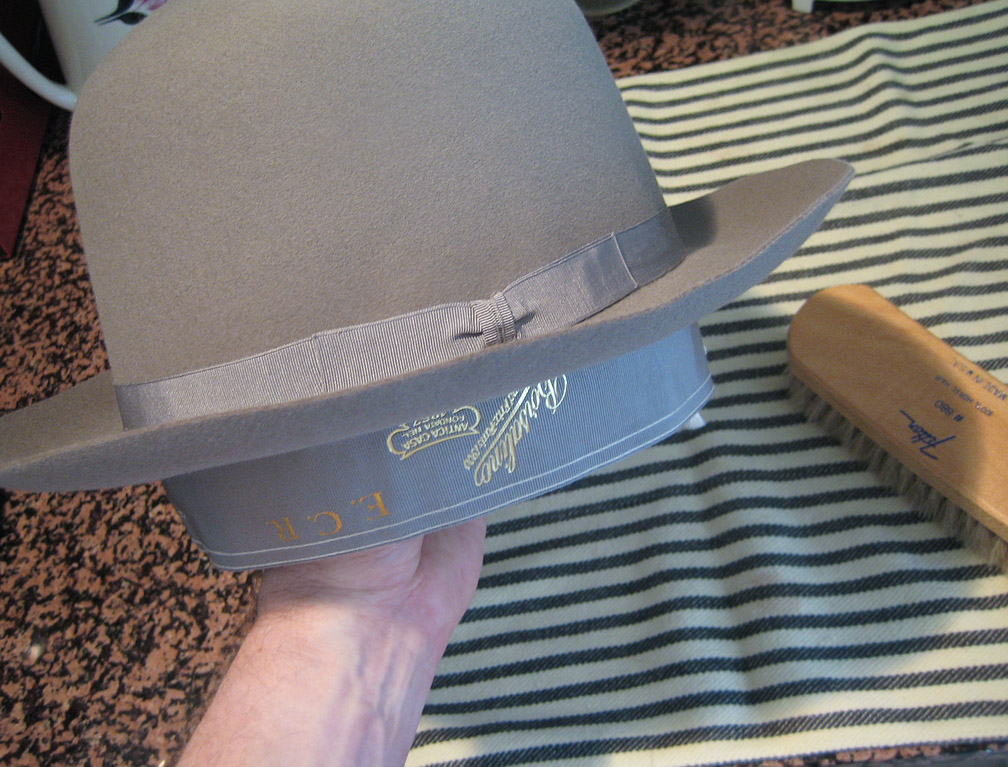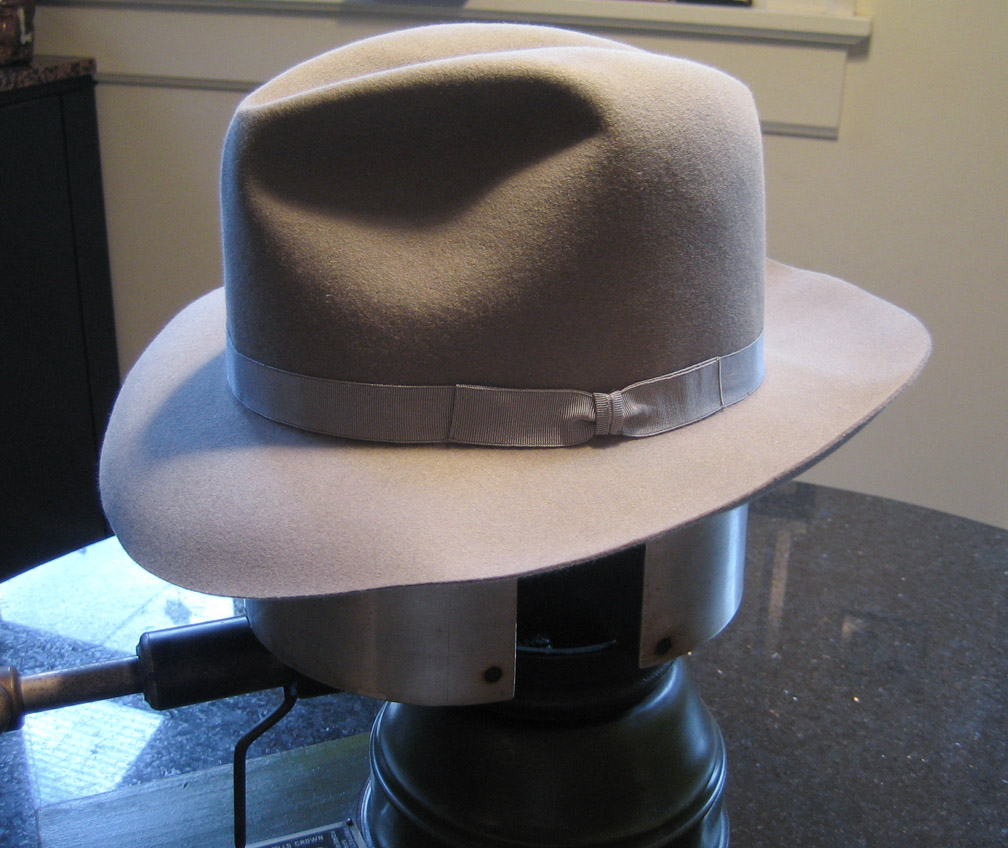- Messages
- 15,083
- Location
- Buffalo, NY
My recently purchased Borsalino pocket hat arrive with a generous amount of lumps and bumps from almost 60 years in a box.

Normally I use the Garvé hat stretcher to steam, block and size my hats. This particular hat is very soft and light. Any ridge on the inside of the hat will telescope through with pressure. The rear sweatband seam is turned and sewn (both the visible fabric and the inner moisture barrier - with the bow added, there is a good amount of thickness there that showed immediately when the Garvé handle was turned.
I decided to work with a block and flange.

This is a size 7 1/8 flange and size 7 block. My head runs somewhere between the two. A nice thing about using the 7 block, is that it can fit inside a slightly larger hat with the sweatband inverted and it provides full support around the crown, without the voids on the sides where the Garvé is open. Here with the block inserted, during steaming:

The fabric sweatband flipped out safely and easily. But note, this is always a concern on vintage hats... especially unreeded Borsos, which I find have a tendency to pop stitches when stressed. I also learned that it is easier to insert the block than it is to remove it... so watch a tight fit!
I used the both sides of the brush to smooth the felt. The wood handle works well to burnish the wrinkles, the bristles lift and fluff the fibers. With the paper liner protector, I handled the top of the crown very gently. Once the crown was smooth, I went to work on the brim. I haven't found or made a stand for the flange, so I used 4 water tumblers.

Just steaming the brim and smoothing over the flange makes quite an improvement.

My family has not yet allowed me to install a sandbag flange weight in the kitchen, so I tried an alternative. We have a couple of "memory foam" Tempur-Pedic pillows that I thought might work... they weigh a ton and conform to shapes almost like a bean bag.

In the end, I found a light pass with a steam iron (with several layers of cotton cloth protecting the feltworked the best.





Normally I use the Garvé hat stretcher to steam, block and size my hats. This particular hat is very soft and light. Any ridge on the inside of the hat will telescope through with pressure. The rear sweatband seam is turned and sewn (both the visible fabric and the inner moisture barrier - with the bow added, there is a good amount of thickness there that showed immediately when the Garvé handle was turned.
I decided to work with a block and flange.

This is a size 7 1/8 flange and size 7 block. My head runs somewhere between the two. A nice thing about using the 7 block, is that it can fit inside a slightly larger hat with the sweatband inverted and it provides full support around the crown, without the voids on the sides where the Garvé is open. Here with the block inserted, during steaming:

The fabric sweatband flipped out safely and easily. But note, this is always a concern on vintage hats... especially unreeded Borsos, which I find have a tendency to pop stitches when stressed. I also learned that it is easier to insert the block than it is to remove it... so watch a tight fit!
I used the both sides of the brush to smooth the felt. The wood handle works well to burnish the wrinkles, the bristles lift and fluff the fibers. With the paper liner protector, I handled the top of the crown very gently. Once the crown was smooth, I went to work on the brim. I haven't found or made a stand for the flange, so I used 4 water tumblers.

Just steaming the brim and smoothing over the flange makes quite an improvement.

My family has not yet allowed me to install a sandbag flange weight in the kitchen, so I tried an alternative. We have a couple of "memory foam" Tempur-Pedic pillows that I thought might work... they weigh a ton and conform to shapes almost like a bean bag.

In the end, I found a light pass with a steam iron (with several layers of cotton cloth protecting the feltworked the best.




Last edited:




